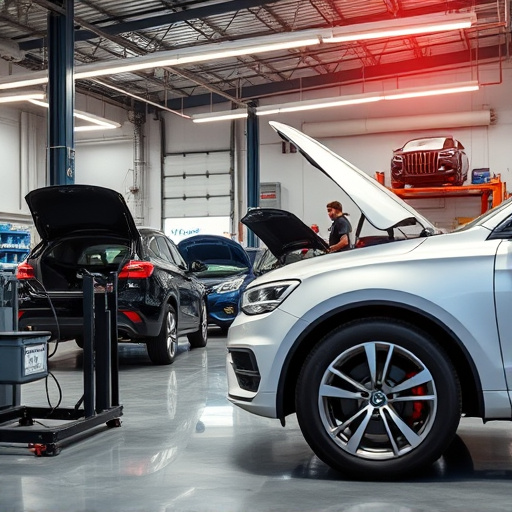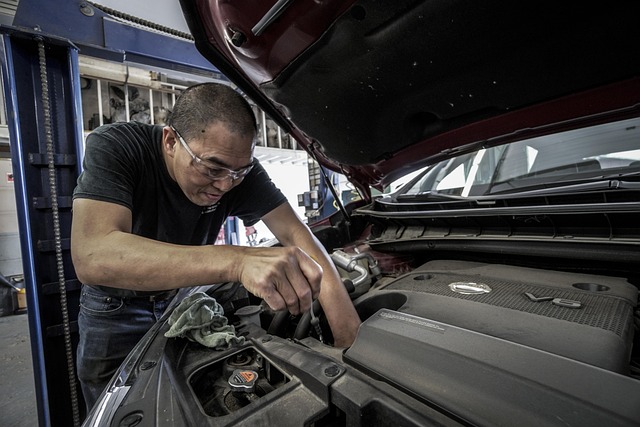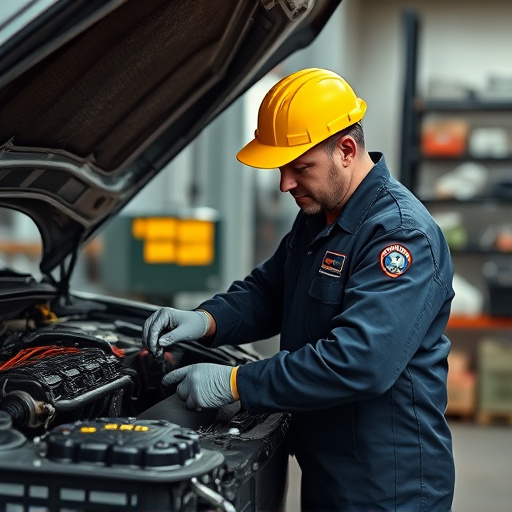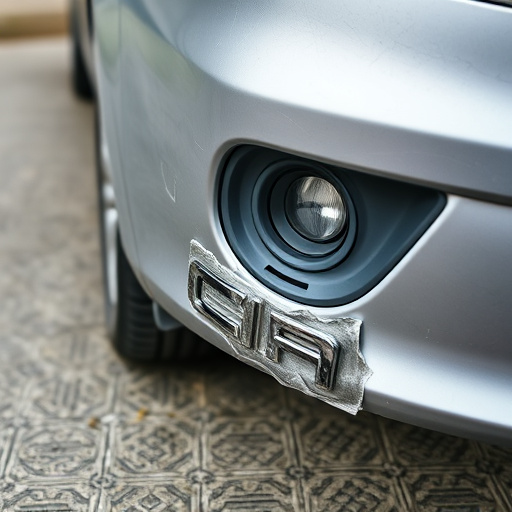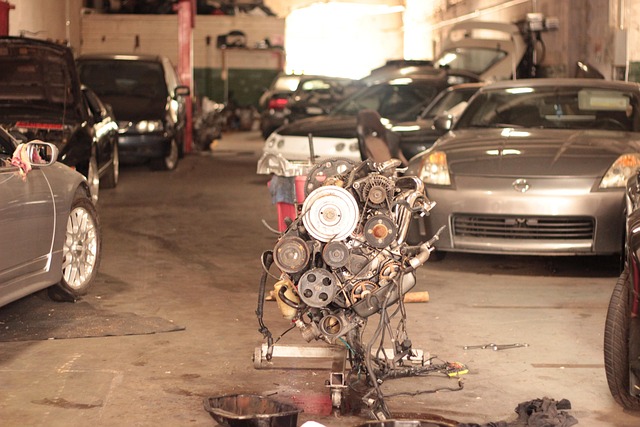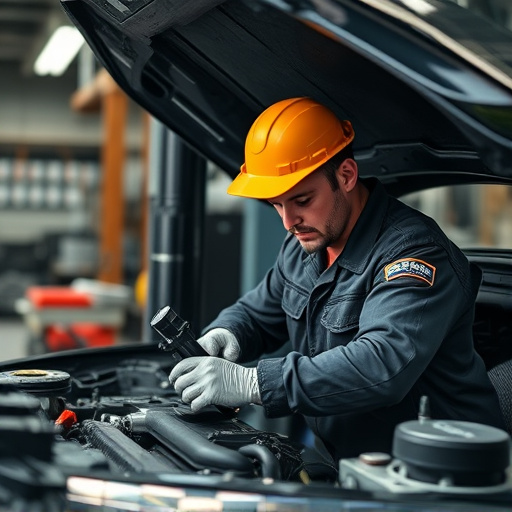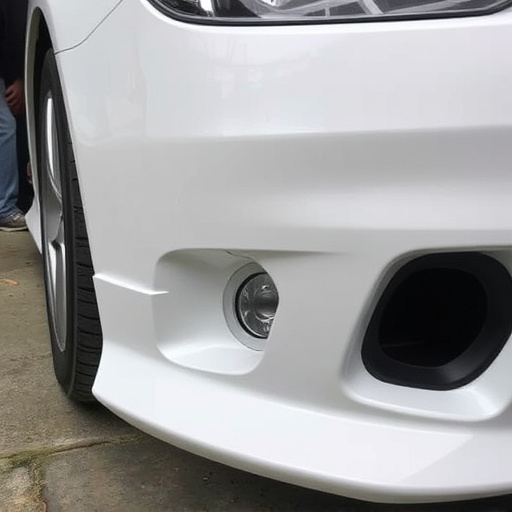Apron assembly repair is a critical process for auto collision centers, strengthening vehicle structural integrity during services like car paint. A well-executed repair boosts vehicle durability, streamlines shop operations, and increases productivity, leading to satisfied customers and a positive reputation. Optimizing processes through standardization, specialized tools, digital systems, lean manufacturing principles, and advanced technologies is vital for automotive shops' success in apron assembly repair.
In today’s competitive market, efficient shop operations are paramount. Apron assembly repair plays a crucial role in enhancing overall operational flow and productivity. This article delves into the fundamentals of apron assembly repair, exploring how it serves as the foundation for shop efficiency. We will discuss strategic approaches to streamline the assembly process and provide best practices for continuous improvement, ultimately optimizing your workshop’s performance through effective apron assembly management.
- Understanding Apron Assembly Repair: The Foundation of Shop Efficiency
- Strategies for Streamlining the Assembly Process
- Enhancing Operational Flow: Best Practices for Continuous Improvement
Understanding Apron Assembly Repair: The Foundation of Shop Efficiency

Apron assembly repair is a critical process that forms the backbone of any efficient auto collision center or car body restoration shop. It involves the meticulous reconstruction and reinforcement of the apron, a vital component in ensuring the structural integrity of vehicles undergoing various services like car paint services. A well-executed apron assembly repair not only enhances the overall durability of the vehicle but also plays a significant role in improving operational efficiency within the shop.
By focusing on this foundational aspect, auto collision centers can streamline their workflow and reduce turnaround times. Efficient apron assembly repair practices enable technicians to seamlessly transition between different stages of car body restoration, thereby optimizing space utilization and resource management. This, in turn, leads to enhanced productivity, satisfied customers, and a positive reputation for high-quality car paint services and comprehensive vehicle repairs.
Strategies for Streamlining the Assembly Process

In the realm of apron assembly repair, streamlining the process is key to enhancing operational efficiency within any automotive shop. A well-organized and optimized assembly line can significantly reduce turnaround times and improve overall productivity. One effective strategy involves implementing standardized procedures for each step of the apron repair process. By creating detailed, step-by-step guides, technicians can ensure consistency in their work, minimizing errors and saving time on troubleshooting.
Additionally, investing in high-quality tools and equipment designed specifically for apron assembly repair can greatly facilitate the task. Utilizing specialized tools tailored to various car scratch repair and vehicle dent repair tasks streamlines the process, enabling faster and more precise results. Moreover, integrating digital systems for part inventory management and work order tracking can further optimize operations, offering real-time updates and ensuring efficient resource allocation for all car repair services.
Enhancing Operational Flow: Best Practices for Continuous Improvement

Efficiency in apron assembly repair is a key driver for enhancing overall shop operational flow and productivity. Best practices for continuous improvement focus on streamlining processes, minimizing downtime, and maximizing resource utilization. Regular audits of existing workflows can uncover bottlenecks and areas for optimization, ensuring that every step from part procurement to final quality check contributes value. Implementing lean manufacturing principles, such as 5S organization and just-in-time inventory management, can significantly reduce waste and improve turnaround times in apron assembly repair processes.
Additionally, integrating advanced technologies like automation and digital tools can play a pivotal role in enhancing operational efficiency. For instance, automated paint systems offer precise application and faster drying times, while computer-aided design (CAD) software enables accurate measurements and design modifications during vehicle body repair or car paint repair sessions. By adopting these best practices and leveraging the right technologies, shops can achieve smoother workflows, higher customer satisfaction rates, and competitive edge in the market.
Apron assembly repair is a key component in optimizing shop operational efficiency. By understanding the fundamentals of apron assembly and implementing streamlined strategies, shops can significantly enhance their production flow. Continuous improvement through best practices ensures that operations remain effective, reducing downtime and maximizing productivity. Investing in efficient apron design and maintenance is a game-changer for any workshop looking to excel in today’s competitive market.

